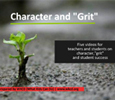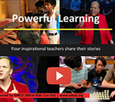SUBSCRIBE TO OUR____ NEWS BLAST
OTHER WKCD WEBSITES SPECIAL COLLECTIONS Students as Allies in School POPULAR WKCD PUBLICATIONS (PDFS] A Guide to Creating Teen- Cultural Conversations through Creative Writing Documenting Immigration Stories First Ask, Then Listen: How Your Students Can Help You Teach Them Better Making Writing Essential to Profiles of Politically Active Youth Queer Youth Advice for Educators The Schools We Need: Creating Small High Schools That Work for Us WKCD VIDEO Growth Mindset and Five Videos for Teachers and Students on Powerful Learning: Four Inspirational Teachers Share Their Stories Tricks: Discussion
Starters for Students
About Pushing Past Fear
|
Life Lines: Finding Family through Musical Improv in Sunset Park by BARBARA CERVONE | JUNE 22, 2016
For the next three days, these 65 middle and high school students would be wearing themselves out, body and soul, in the best tradition of rehearsing musical theater. Then they would go back to perform in Sunset Park, the immigrant community they call home. Until this retreat, the students—all members of a program called “Life Lines”—had worked separately in troupes for repertory, dance, music, vocal. Together for the first time, making new friends was part of the challenge for Tasadie, Jeremia, Intizor, Angelica, Omar, Tahiry, Ximena, Idalis, and the rest. “I’m not sure which scares me more,” confessed Eddie, age 15. “Being with all these kids I’ve never met, or improvising on stage.” Some of the girls clutched stuffed animals. “I’m already homesick,” an eighth grader said. When the whole group met after lunch, the adult staff—from Center for Family Life in Sunset Park, of which Life Lines is a part—handed out the schedule. The first day would hold five rehearsal periods, from 1:30 to 10:30 p.m., broken by an hour of team-building activities and dinner. Students not part of one of the troupes would work on costumes and set design. A circle-up with a snack and a brief hike in the dark would follow the last rehearsal, with lights out at 11:45 p.m. “We want our students to experience the same intense rehearsal schedule professional actors face,” said Caitlin Steitzer, co-director of Life Lines. The next day promised five more rehearsal blocks, interspersed with another team-building exercise and formal pauses for group reflection. Then everyone would play “The Game,” a first run-through of 37 scenes that, woven together, gave the show its name: “Connections.” A midnight walk in the woods would wrap up the evening. Deanna, a Life Lines camp veteran, laughed. “No saying the “T” word,” she said.
Theater, grounded in social group work It would be easy to think that the retreat’s main goal was to create a finely polished theater production. In 2003, Life Lines received the Coming Up Taller Award from the President’s Committee on the Arts and Humanities for its outstanding work in the arts. But on this unseasonably cool spring morning, Life Lines staff had their eyes on another prize: knitting this diverse group of adolescents into a community of care, where everyone mattered, everyone had a voice, and no one gave up. With painstaking detail, the planners had outlined an experience in which each element built towards this goal—embracing serendipity along the way. For almost four decades, Center for Family Life (CFL), a social service provider with deep roots in Sunset Park, has helped the neighborhood’s Latino and Asian families negotiate life’s challenges and opportunities. A vision of neighborhood families and social institutions evolving over time and contributing to each other’s ongoing development guides the Center’s work. CFL partners with nine schools to offer a full menu of programs for Sunset Park youth and many, like Life Lines, are informed by the principles of social group work. Rooted in the Settlement House movement of the early twentieth century, the approach promotes individual growth and social change in the context of a group experience. Every one is expected to contribute to and gain from the group. Trained leaders anticipate predictable stages in the life of a group and purposefully select activities to meet the needs of participants at each stage. “We see the group as a living, breathing, changing organism,” explained Steitzer, who brings to CFL a degree in social work and a passion for improvisational theater:
Like social group work, improvisational theater also traces its roots to the Settlement House movement (in this case, to the legendary Hull House). For CFL co-director Julie Stein Brockway, who founded Life Lines, combining the two methods made perfect sense. Brockway (who taught co-director Caitlin Steitzer at Hunter College of Social Work) studied dance before getting a degree in social work. “When we give students the permission to speak from their own experience instead of someone else’s words to interpret, it shows we trust them” said Brockway. “Improv demands that the students listen closely and support one another, that they take risks.” For the youth who sign up for Life Lines, now in its 34th year, the draw is simple. “I heard about the program from my teacher,” said one seventh-grade girl, “and I figured it would be fun.” Few come with a performing arts background, and many said that before joining the program they had felt like outsiders, or that they rarely spoke up. Gabriel Solis, a young part-time staff member who first experienced Life Lines in middle school, said he only appreciates now “the intricate framework that empowered us all.”
Building community Each fall, Life Lines members complete an afterschool semester of vocal music, dance, music production, visual arts, and/or improvisational theater. In January, students pick the troupe they want to join for that year’s production: dance, vocal, and/or repertory. The students must audition, but the bar is commitment and willingness to try something new, not performing arts experience. For the next several months, students meet weekly in their troupes, honing the skills they’ll need on stage—voice projection, following choreography, riffing off another actor. They also practice social skills like sharing their thoughts and feelings and respecting those of others, taking responsibility and being accountable. The camp retreat comes at a time when Life Lines youth are primed to take on a new challenge, Steitzer noted. In the language of social group work, it provides “an intervention in the group’s development,” she said:
After three days, students ideally will leave having experienced themselves as part of a community where everyone feels valued and safe, where confidence is built and exchanged. “We tell them that at the beginning, they’ll probably hang with the few people they know—that’s human nature,” said Brockway. “But the goal is that every day they up it: three new people tomorrow, five the next day. Making new friends takes the same courage as trying new things.” Life Lines staff set the stage with table mixers. At every meal, students are assigned to sit with six or seven students they don’t know. Structured prompts ensure that everyone knows each other’s names and invite informal discussion: find five commonalities you can't see with other people at your table, pick a popular song—or create your own—for each of these words: friendship, family, understanding. Sleeping arrangements are also assigned. On the first night, when students go to their cabins, they talk about what they need to feel comfortable in the group. “At first I didn’t know what to say,” said Rachel, a newcomer to Life Lines. “Then I thought about wanting to be accepted for who I am, so that’s what I told them.” Artistic expression As much as this three-day retreat cherishes community-building, its rigorous rehearsal schedule makes clear that artistic expression matters, too. Each year’s production draws from the struggles and vitality of the Sunset Park neighborhood. Repertory students—generally older and more experienced—work alongside staff to shape its core themes and content. This year, the students and staff decided to try an improv format called “La Ronde.” “Connections” begins with two characters (a young biracial couple), then rotates through a sequence of scenes with other characters, and finally returns to the original couple. When the curtain falls, the troupe’s 20 young actors have circled through—and connected—27 scenes. “Friendship, dating, racism, immigration, family problems, understanding, emotions—it’s all there,” said Raphael, a member of the repertory troupe. His character, Dimitri, is part of a six-student ensemble, which has decided to create an environmental booth for an upcoming school fair but runs into trouble at every turn. It’s the morning of the second day of the retreat. Students have finished breakfast—where the table mixer included sharing favorite breakfast foods—and sorted themselves out for the day’s first rehearsal block (the sixth since they arrived the day before). The set design team returns to creating and cutting out black silhouette profiles of every student involved in the production. A stone’s throw from the camp cafeteria, improv coach Steitzer takes Raphael and the other members of the environmental club ensemble through their paces. “For the next minute and a half, I want you to work off of each other,” she says. “With words and movements, convey the emotion of teenage stress.” Nearby, Brockway invites four students—playing the characters of an estranged couple, their daughter, and the mother’s new boyfriend—to silently convey compassion and forgiveness. “Use your bodies,” she tells them. In the camp’s log auditorium, the Life Lines chorus is finishing its warm-up, led by Chris Forbes, the program’s longstanding music specialist. They have calibrated their breath and modulated their voices, practiced ascending fourths and crisp final consonants. Now they turn to the two songs that will close the show. “In Our Eyes,” an original composition by the repertory troupe and Forbes, expresses the group’s shared longing for meaningful connection. “The Rhythm of Life,” with its contagious beat, comes from the hit Broadway musical, Sweet Charity. Warning students that he needs to protect his voice, Mr. Forbes nonetheless bursts into song with his young chorus, cajoling and encouraging from his electric keyboard.
In the camp infirmary, the dance troupe meets for the first time with the heavy-metal band called Burden to the Grave. The five-member band had joined the retreat the previous year, but hung back, believing their hardcore music would go down badly. This year they came again, reluctantly agreeing to perform one song with dancers. “So what’s the emotion your song expresses?” Danika Manso-Brown, a dance specialist with Life Lines, asks the musicians. Aggression, frustration, anger, they reply. The night before, Manso-Brown and another Life Lines staff member had demonstrated a “mosh pit,” where dancers explode with movement and engage in full body contact. “Would this work?” she wonders aloud. With deafening sound, Burden begins to play and the dancers leap, collide, and whip their hair. Letting go is harder than it looks, the dancers agree, but after three rounds, they feel they’re getting the hang of it. “I know this isn’t your kind of music, your kind of dance,” Burden’s drummer says in the debrief that follows. “But the fact that you tried makes me feel understood for the first time.” True to its theme of connections, each of the show’s seven dances intentionally mirrors the emotions of the improv scene that precedes it. Burden and the dance troupe take the stage, for example, after the character Khloe crosses swords with her mother. She has been grounded, because the mother worries that her daughter’s friendships could lead to trouble, revealing her status as an undocumented immigrant. Pounding her fists, Khloe appears in a corner of the darkened stage. The band and the dancers ignite.
Performance week Back in Sunset Park, with two weeks until show time, Life Lines students and staff threw themselves into afterschool, evening, and daylong rehearsals. An additional 80 middle school students joined the closing dances and songs. Opening “night”—actually an afternoon show for students at Sunset Park High School—kicked off five days of performances for classmates, families, and the community. Dread mixed with excitement. “You cannot overstate how hard it is for these kids to step on stage in front of their peers," said Steitzer. When the curtain fell the final night, hugs, cheers, and tears erupted back stage. “Everyone was crazy with joy, relief too, but so much joy,” said 17-year-old Deanna, whose exuberance on and off stage was hard to miss. What the audience didn’t see was what made the final performance particularly special. Marissa (not her real name), a member of repertory, had missed the April retreat when her father fell into a coma. Several days later he died, and when Marissa found her way back to Life Lines, it was performance week. One by one, members of the repertory troupe embraced her and taught her the ensemble work and the dance steps she needed to learn. Just before the curtain went up for Thursday night's performance, Marissa collapsed in tears, too overwhelmed to take the stage. But her ensemble partners held her tight—and she appeared on cue. Closing the circle After a production like this, “Great show, we’ll see you next year!” might be the last refrain. In Life Lines, true to its social group work foundations, it was time to close the circle. Together, students watched a video of the performance (until now, they hadn’t seen the full show). The next day they broke into their individual troupes to celebrate, talk about what they’d learned and to create their own closing activity. At an all-cast party, students and staff formed a large circle and exchanged reflections.
“For the first time, I feel like I belong,” said Destiny. Like many students, her shyness had kept her on the outside looking in, and the program had pushed her out of her shell. Raphael, a senior, said that if he’d known the program would be so life changing, he would have joined years earlier. Another student compared Life Lines to a family where getting mad and rebuilding trust are part of the flow, but the end result is something durable. Indeed, trust was an especially important theme for members of the repertory troupe. There’s something about improv that forms special ties, they agreed. “You’re totally bonded to the group,” said Brockway. “You are performing without a script. You have to trust yourself and your instincts and those of everyone on stage with you.” Victoria, who played the character of a mother struggling with divorce, talked about how vulnerable she felt the first time she performed in front of peers (she read a poem she had written) and how her confidence and motivation grew after that. “The staff pushes you outside your comfort zone and once you get comfortable, they push you again,” she said. “But they say they believe in you, you can do it. And before you know it, you’re performing in front of all these people and their belief has become yours.” “Everybody sees me on Broadway,” quipped Deanna, who had moved from Long Island to Brooklyn the summer before and began the year lonely and emotionally fragile. She’d always loved to dance and sing, though, and when Life Lines came to her attention, she signed up for everything she could—and found a home. “Accepting you for who you are, supporting you for who you want to be. This is what family should be about,” said Deanna, adding that it rarely is. “For me, Life Lines is that kind of family. It’s home.” For Brockway and her colleagues, these affirmations run deep. “Connections—that’s what this show and Life Lines is all about,” said Brockway. “It recognizes the deep human need to feel accepted and to belong.” Lasting impact Months after the exuberance of the last curtain call, Life Lines staff wonder—and worry—how much of the program stays with students. They know well what it takes to achieve the lasting impact they crave. "We talk about how we’re planting seeds that will grow and blossom with time," said Karla Herrera, who rounds out the Life Lines leadership team. "But we work in conditions where our time with the kids is limited, the resources are few, and the systems we are part of are broken. We work with kids who are up against so much." Like the best youth development programs, Life Lines offers a ladder of opportunities that keep students engaged beyond the annual production. There's a full day, six-week summer camp for grades six and up that mixes performing arts with trips and special events. Older Life Lines students can serve as paid camp counselors or assistants, helping adult staff organize and lead workshops in the visual and performing arts. During the school year, seniors may intern with a member of the Life Lines staff, in addition to immersing themselves in that year's production. Deanna plans to polish her song writing with music specialist Chris Forbes this coming year. Herrera, for her part, has grown up with Life Lines, one of a handful of young adults who, over the years, joined the program when they were in middle school and went on to become part of the staff. Herrera signed up for Life Lines in sixth grade, soon after she moved with her mother from Caracas, Venezuela to Sunset Park, "upending my entire life." By the end of the year, Herrera had not only sharpened her English skills and made friends, but found her voice. She signed up again and again and took on every role she could in the summer camp. When she was a student at New York University, Brockway invited her to be the assistant camp director, and four years later, with a masters in social work in hand, Herrera joined Life Lines as a co-director. "Does what we do last?" Herrera asked again. "Considering all of the challenges our students face, is what we're doing enough to keep their hopes alive, to keep them believing that they are smart and powerful and capable of great things?" "Yes," she answered. This profile of Life Lines and the Center for Family Life is the third in a series of stories about some of the remarkable programs that are part of New York City’s Student Success Network—a rapidly growing, self-governing network of 50 youth development and education organizations committed to empowering low-income middle-and high-school students with the social and emotional competencies to succeed in college and career.
What Kids Can Do, Inc. | info@whatkidscando.org | www.whatkidscando.org
|









